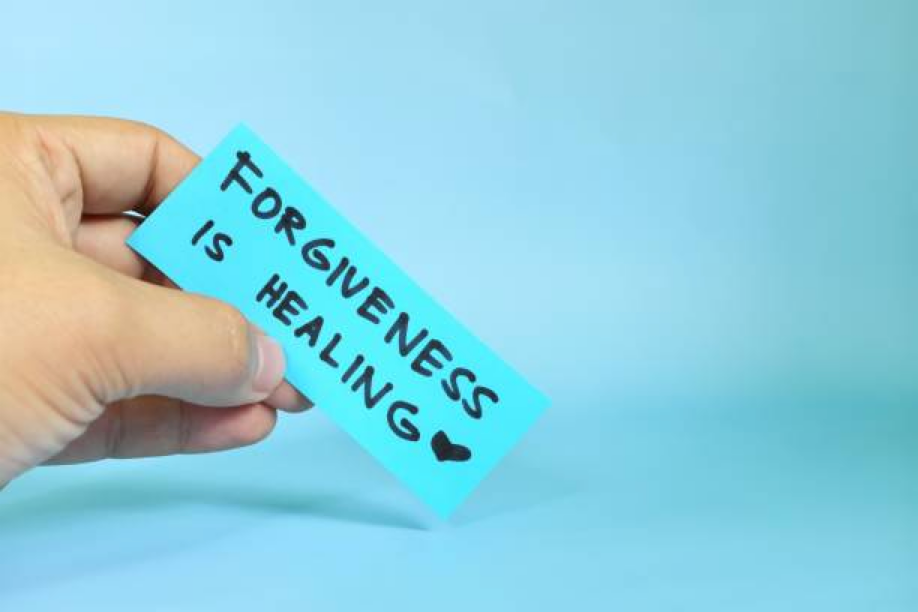Staff
Competency 6: Spiritual Martial Arts
Posted by Holy Family Counseling Centers Staff on April 20, 2020
A. The call and role of a pastoral leader.
Fr. Th omas Augustine Judge, founder of Th e Missionary Servants of the Holy Trinity (MSST), once gave a speech about true humility. He noted that the truly humble person knows who they are before God, what needs to be done, and does it. Th at insight is a good accompaniment as we continue to seek to respond to God’s call to be a pastoral leader as priests and as shepherds striving to be good by the mere imitation of Christ THE Good Shepherd.
This insight into an ever more authentic humility bids every priest to be a servant leader, who knows who they are before God, what is the task at hand, and who seeks simply to do it...while inviting others to follow. That begs the constantly renewing question for every priest/good shepherd: What is the task before me and how do I do it?
A presentation could follow on how to identify and prioritize the tasks before us, but in that functional pursuit we may lead away from the essential goal of acting “in persona Christi.” For the priest/good shepherd then, the task is being the voice of Christ the Shepherd in more than merely a functional way. Th e implication may be that our fi rst consistent task is to substantially “lose ourselves” in Christ, participating with our whole being in the mystery of Christ’s life, death, and resurrection. Our common work then is to make our understanding, freedom, will, and self-off ering as a living sacrifi ce (cf. Rm 12: 1-2). Could it be that it is only in the consistent participation in Christ’s sacrifi ce, in his kenosis, that our ministry of leading will be authentic? Being a servant-leader calls us to grow into the ability to say to the Father, together with Christ: let “not my will, but what you will” be done (Mk 14: 36). Proclaiming leadership, therefore, always involves self-sacrifice, a prerequisite for our authenticity, efficacy, and loving service to the Church as the Bride of Christ.
B. Maintaining calm in the storms of conflict.
Proclaiming leadership in our roles oft en comes with attacks on our proclamations. In the diverse community of the Church there are numerous views and voices. As such, we must always be aware that there will be dissent to the way we function in our leadership roles. How do we adjust to these moments of conflict as they arise? How do we remain in a mode of self-sacrifice when faced with animosity and belligerence? What wounds do our parishioners project onto the priesthood and thereby to us?
In life some of the most interesting stories we hear as individuals are conflict stories. When we see two people deep in conversation, they are often in the midst of telling, or hearing about, some form of conflict. Conflict stories are fascinating, and we often hold strong feelings about them, especially when they are our own. These stories are told over and over again and we relive the experience of them and the hope that the other person would change just a little bit. Conflict holds much promise. If it weren’t for the conflicts we face in life, we would not grow as individuals and connect to others. The Passion is a story of conflict, connection, and of growth. Conflict can also follow another pathway, one of disconnect and isolation, like the path that Judas Iscariot followed. Conflict provides all the materials necessary to build walls and barriers to the world and those we love if we choose the path of isolation. Our own habits in conflict can take over and leave us wondering why we reacted a certain way or said something we’ll later regret. We always have the choice to change our habits and adjust our reactions to conflict.
To adjust our reactions to conflict, it may be helpful to look at the practice of Aikido, though not in the physical sense. The art of Aikido is translated as the way of the harmonious spirit. The goal of entering a meeting (what Aikido calls conflict) is to leave the other person as unharmed as possible. In other words, both people in conflict should leave feeling whole. In Aikido, the intent is to move towards the conflict and utilize the other individual’s energy to deflect their attack. Judy Ringer has categorized six facets of aikido as a conflict metaphor:
- Resistance. My initial reaction to adversity is to resist it. In a physical assault, I want to keep the attacker away from me. Similarly, I would rather not have to deal with a workplace conflict, a difficult person, or a frightening illness.superiors, colleagues, employees, and parishioners allows for a well-rounded way to learn.
- Connection. At some point, however, I must connect with the conflict if there is any hope of resolving it. In aikido, I connect by moving toward the attacker and joining my energy with theirs. In life, I connect when I accept that the problem exists. Connection is the first step toward resolution.
- Practice. As I acknowledge the conflict, I begin to take action. At first my action is unskilled. I make mistakes, and I practice and refine my approach. Aikido practitioners refer to this refinement process as “getting on the mat.” The mat is the place where we meet to learn and hone our technique and practice confidence and presence.
- Discovery. Through steady practice, I gradually find myself in new territory, where the realization of how little I know catapults me into a land of discovery. Whether on the aikido mat or on the mat of life, I become a learner. As I move from resistance to curiosity and wonder, my practice becomes fun.
- Power. Discovery brings a new kind of power because it is aligned with energy. I learn that power does not equal force or coercion. Rather, this new power increases in direct relationship to flexibility and empathy.
- Teachers. Finally, I notice that conflict has become my teacher. My difficult relationships have taught me flexibility and assertiveness. Through adversity, I have discovered new perspectives and insights. In aikido we say, “The attack is a gift of energy.”
The difference between a reaction and a response is time. When there is little time after a stimulus presents itself, we are reacting. If we can give ourselves a few breaths before making a move or statement, we move into the realm of response. Responding to stimuli means that we are able to do so with some level of control, Judy Ringer offers these ideas:
- Breathe and Center. Often. A conflict can unbalance us with strong emotions and feelings of unworthiness, anger, sadness, and frustration. Do not avoid your emotions but treat them as guides. Appreciate and observe them as you might observe a play.
- Take the Long View. It is so easy to get caught in the turmoil of the conflict that we forget there will be a tomorrow. Take some quiet moments to close your eyes and see yourself in the future with the conflict resolved. Imagine how you will feel with the problem behind you. What would you like the relationship to look like a month from now? A year from now? Meanwhile, eat well, go to bed at regular hours, laugh, and allow yourself to forget the problem occasionally. This may not be easy, but it is effective. Allow your inner wisdom to work silently while you continue to engage in life.
- Reframe. Step outside the conflict momentarily and look at it through a more objective lens. Instead of resisting, ask yourself if there is a gift here — an invitation to look at things differently or to try a new behavior. Acknowledge the other person by standing in his shoes. Why is he behaving this way? What does he want? How would you feel in his position?
- Experiment. Brainstorm all possible responses to this situation and try them on for size. Ask a friend to role-play alternatives you think you’d never choose because they’re so unlike your usual persona. Have fun exercising unexplored selves.
- Practice. Choose one new behavior that will make a positive difference in your attitude toward life and make a commitment to practice that behavior every day.
- Count Your Blessings. Notice the good things in your life. Cultivate gratitude and wonder. Thank God for what you have been blessed with.
C. Conflict Resolution (practical uses)
Putting what we know about conflict resolution into practice can be difficult. The command to “love one another as I have loved you” is difficult to live out, especially in these dividing times. A loving and merciful response towards contentious individuals requires the cultivation of the virtues of humility, patience, and trust in our Lord. These virtues coupled with some fundamental conversation skills can allow us to arrive at a resolution that can leave both individuals feeling heard, accepted, and valued.
The journey of successful conflict resolution starts with cultivating a trust in God. However, this is not a blind trust, it must be coupled with responsibility to cultivate a loving response. This requires us to be open to the other, receiving them where they are at and is a process that requires us to trust that in discomfort, Christ is leading us towards becoming more loving individuals.
Below are practical steps to Conflict Resolution:
- Step One: Clarify everyone’s positions and elaborate where necessary. The best way to start the process of clarification is to reflect what you heard in a non-judgmental way. This can be achieved by naming the intellectual and emotional content. Starting with reflecting on what you heard will help to ease the tension and will help people feel like you are being attentive and care about their concern. It will be helpful to start your reflection with phrases such as: “Help me understand if I heard you correctly …”; “What I am hearing you say is…”; “Would you clarify my summary?” It is important to follow up your reflections with an invitation for the other person to offer clarification if they think you misunderstood their point of view. If they clarify their position, make sure to reflect their clarification and ask for their input again. Continue this process of communication until the other person is satisfied with your interpretation.
- Step Two: Assess the truth and value behind what is being said. Often, the viewpoint people hold is the fruit of them wrestling with the truth and lies they have experienced in life. When we can recognize the truth behind the value that is held is based on the other’s experience, we can meet others where they are. Ultimately, if we can understand the value that they felt was infringed, we can understand their emotional turmoil. An easy to remember practical application of this clarification and assessment can be used with the following sentence structure: “What I hear you saying is, that you feel…. (Name the emotion you suspect that they are feeling)”; “Because…. (Name the value that you suspect they believe was infringed)”; “So what I heard you ask for is... (Name what you believe they are requesting.) did I hear you correctly?”.
- Step Three: Clarify why you hold your position. However, it is important to remember that instruction is not to convince the other that your viewpoint is the correct one. Rather, it is to offer clarification on the values at play within your own viewpoint. This can be a time to clarify and instruct on what the Church teaches, as well as offer appropriate self-disclosure in regard to the personal struggle at arriving at pragmatic solutions. Self-disclosure can be difficult to gauge what is appropriate versus inappropriate. Appropriate self-disclosure should reflect the internal conflicts that are a play when attempting the related pragmatic solutions. • Step Four: Move towards collaborative solutions. Compromising is not about sacrificing your values but recognizing the value in the other’s perspective. Resolution comes easiest when both parties make an effort to meet each other in compromise. If no attempt is made or something is being asked that would compromise the integrity of your personhood or priest hood, then resolution may not be appropriate. Accepting when resolution is not appropriate/ not possible is part and parcel of having appropriate boundaries.
Sometimes people may stop and ask for something or complain at inappropriate times. We still want to give a loving response but realize a resolution to the issues may not be possible to ascertain at that moment. In these cases, it is appropriate to acknowledge the concern and to assert that it is an important topic you do not want to rush through and would like to come back to it later. This allows you to acknowledge the request, while asserting your boundaries and creating space for the things you need to be attentive too. As mentioned above, when individuals are unwilling to meet in the middle or request something that would compromise one’s personhood or priesthood, this is a situation in which resolution is not possible. Here it is helpful to accept that reality and reflect to the individual that it seems what they are asking is too much or that it seems they are unwilling to meet you. It is not your responsibility to move a person out of their stubbornness. This is also where it is important to ask the Lord for strength and courage to be disliked, trusting in him to make all things goods, humility that you are made for God’s love and so is the other while acknowledging freedom is a prerequisite.
Conflict in life is not something that many of us seek out. However, in our role as shepherds, it often is placed at our feet. Responding to conflict instead of reacting to it is often the best way to remain firm in our position while also understanding the views that others bring to us. We would like to conclude with the Act of Love by St. John Vianney:
I love You; O my God and my only desire is to love You until my last breath. I love You, O infinitely lovable God, and I prefer to die loving You rather than to live for a single moment without loving You. I love You, O my God, and I long for heaven only to know the bliss of loving You perfectly. I love You, O my God, and I only fear going to hell because there I will never experience the sweet consolation of loving You. O my God, if my tongue is not able to say at every opportunity that I love You, at least I want my heart to repeat it to You as many times as I take a breath. My God, give me the grace of suffering out of love for You, of loving You while I suffer; give me the grace of one day breathing my last breath out of love for You and at the same time feeling how much I love You. The closer I come to my final end, the more I beseech You to intensify and perfect my love for You. Amen.






